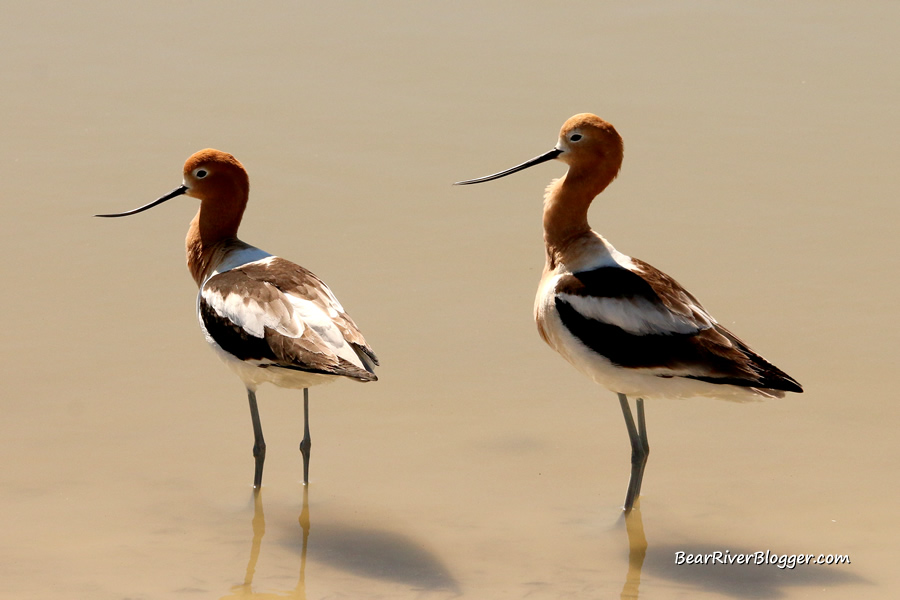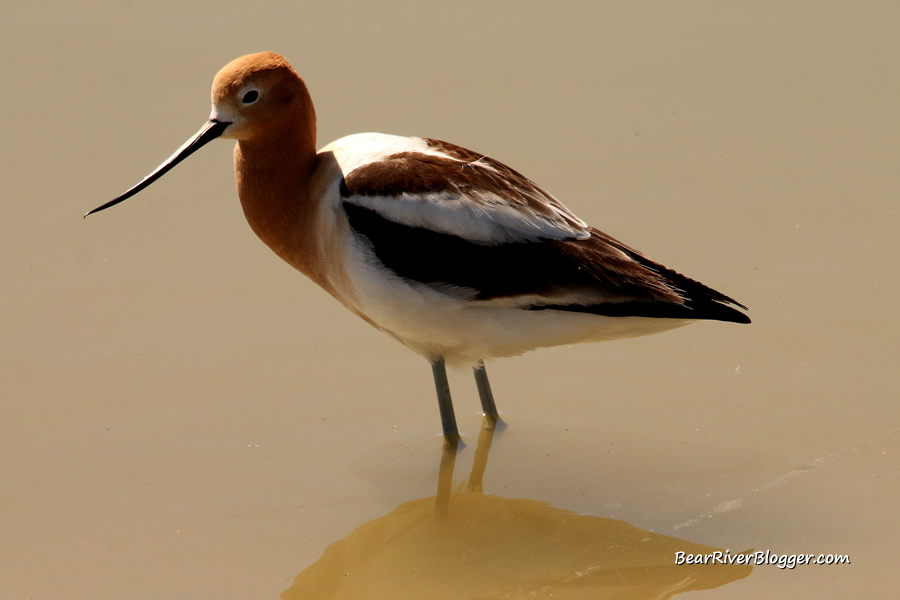When I first got started photographing nature on the Bear River Migratory Bird Refuge auto tour route many years ago, the very first bird that caught the attention of my camera lens was, well, the quirky American avocet and it has been a favorite bird of mine ever since.
I was intrigued by not only how beautifully plumaged American avocets were but also by their interesting behavior as they gallantly defended their small plot of “turf” from rival avocets and even neighboring black-necked stilts at times.
(American Avocets Resting and Feeding. For short nature clips like this one and interesting stories about the natural world around us, check out our Bear River Blogger channel on YouTube for videos and updates from our travels while out in nature, both on and off of the famed Bear River Migratory Bird Refuge.)
But over the years one question kept coming to the forefront of my mind each and every time I had an opportunity to photograph American avocets on the bird refuge, which one was the male and which one was the female and how do you tell the difference.
American avocets are one of many species of birds where both sexes share the same feather patterns and colors, thus making discerning the difference between the two genders based on plumage alone nearly, if not completely, impossible.
But there is a way for even the most novice of birdwatchers to be able to identify which American avocet is a male and which is a female and it is based on beak shape and not plumage like many birds are.
When you come across an American avocet on your next birding trip, pay close attention to and look at the particular shape of the beak.
Male American avocets have a more straightened beak whereas female avocets have a bit more curve in their beak as shown in the photograph below.
The difference is subtle I will admit but there is enough to discern which avocet is male and which is female, especially when you find a pair of avocets together and a side-by-side comparison can be made.

I recently found and photographed a pair of American avocets standing together for this particular blog post where you can easily see the slight but discernable difference in beak shape as they stand next to each other.
Solitary avocets are a little bit harder at first to tell which is male and which is female but after a little experience, it becomes much easier to see the difference in beak shape where no side-by-side comparison can be made.
I have also read elsewhere that the male American avocet is slightly bigger than the female, which if that is also correct does seem to hold true with the pair of avocets I photographed in the image above.
Summer and early fall are great times to find and photograph American avocets on both the Bear River Migratory Bird Refuge auto tour route and the Antelope Island causeway as they feed up before heading south for the winter season.

As fall migration inches closer, thousands of American avocets congregate and stage in large flocks on the mudflats and shallow waters of the Great Salt Lake, making the Antelope Island causeway and tremendous place to see large gatherings of avocets in their drab gray and white winter plumage just before they migrate south to both Mexico and the California and Texas coastlines for the winter.
I hope that helps you identify male vs. female American avocets on your next birding trip, whether it be on the famed Bear River Migratory Bird Refuge or elsewhere.
If you are interested in birds and nature as I am, I offer you to head on over to our subscribe page and sign up for email notifications for future blog posts like this one where we hope to instill a love for both nature, as a whole, and birdwatching, in particular, for anyone looking to learn a bit more about the natural world around us.
And if you are a bird photographer, novice or otherwise, feel free to join us on our Bear River Blogger Facebook page and show us what you are seeing and photographing on your birdwatching trips.







